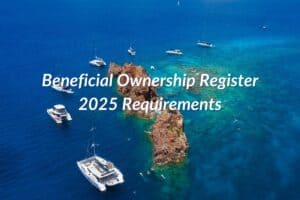Financial institutions comply with the Common Reporting Standard (CRS) is a reciprocal, automatic exchange of information mechanism developed by the OECD at the request of the G20 and unveiled in 2014. The first automatic exchanges of information occurred between the Early Adopters in 2017 with respect to year 2016. The majority of jurisdictions have adopted CRS, which is now the global exchange of information standard. However, the United States has not adopted CRS, and relies on FATCA, its own automatic exchange of information mechanism introduced in 2010 and effective in 2014, which predates CRS and from which CRS was largely copied.
In 2023, CRS was amended to introduce new due diligence and reporting requirements, including the requirement to identify the roles of Controlling Persons and Equity Interest holders, and to identify the types of Financial Accounts being reported. In addition, the amendments bring digital and electronic currencies (Crypto Assets) into the CRS reporting framework. The 2023 amendments are not yet effective, but will come into force when incorporated into local law by CRS jurisdictions.
Due Diligence Rules for Financial Institutions
Financial Institutions (FIs) that are tax resident in Participating Jurisdictions, that is jurisdictions that have adopted CRS, have due diligence obligations to identify Reportable Accounts held by Reportable Persons, that is individuals or, subject to limited exceptions, entities that are tax resident in Reportable Jurisdictions.
In the case of Account Holders that are individuals, reporting FIs must determine the tax residence of such individuals to determine whether the accounts are Reportable Accounts. In the case of Account Holders that are legal entities, Reporting Financial Institutions must apply the entity classification rules to determine whether the accounts are held by Financial Institutions, Active Non-Financial Entities (Active NFEs) or Passive Non-Financial Entities (Passive NFEs), and in the latter case, whether the Passive NFEs have one or more “Controlling Persons” that are Reportable Persons, that is, individuals that are tax resident in Reportable Jurisdictions. An entity’s residence for CRS purposes is determined by where it is tax resident. Where a FI does not have a tax residence, because it is fiscally transparent or resident in a jurisdiction that does not have income tax, it is considered to be resident for CRS purposes in the jurisdiction where it is incorporated, where it has its place of effective management, or where it is subject to financial supervision.
Financial Institutions classifications under CRS
There are 4 types of Financial Institution classifications under CRS. The Custodial Institutions, the Depository Institutions, Specified Insurance Companies, and the Investment Entities. There are two sub-categories of Investment Entities. Type A (or “in Business”) Investment Entities are typically commercial trust companies and asset management companies. Type B (or “Professionally Managed”) Investment Entities are investment vehicles such as trusts, foundations, companies, partnerships, mutual funds, etc.
Type B Investment Entities must meet a two pronged “gross income” and “managed by” test. First, the “gross income” test requires that more than 50% of the entity’s income come from investing in Financial Assets. Second, the Investment Entity must be “managed by” a Custodial Institution, Depository Institution, Specified Insurance Company or a Type A Investment Entity. The “managed by” test requires that the assets of the entity be managed by the managing FI with discretionary authority.
Non-Financial Entities
If an entity is not an FI, then it will necessarily be an NFE, and any entity that is not an Active NFE is a Passive NFE. There are several types of Active NFEs under CRS, including operating companies, holding companies, publicly listed companies, treasury centers, etc.
Typically, a Passive NFE is an entity most or all of whose assets are Financial Assets and that derives more than 50% of its income from those Financial Assets but that does not meet the “managed by” test because its assets are not managed with discretionary authority by another qualifying FI. In addition, Type B Investment Entities resident in non-Participating Jurisdictions, such as the United States, are treated as Passive NFEs, with the result that FIs holding accounts for such investment entities must “look through” the entity and its Controlling Persons who are resident in Reportable Jurisdictions. This is anti-abuse rule and is limited to Type B Investment Entities.
The determination of an entity’s status as an FI or NFE must be made under the laws of the jurisdiction where the entity is resident, provided it is resident in a Participating Jurisdiction. If the entity is not resident in a Participating Jurisdiction, the entity’s status as an FI or NFE is determined by the laws of the jurisdiction where the NFE maintains its accounts. An entity’s status as an Active or Passive NFE is also determined by the laws of the jurisdiction where the NFE maintains its accounts.
Reporting Obligations for Financial Institutions
Reporting obligations fall upon Financial Institutions that are Reporting Financial Institutions, which essentially are Financial Institutions tax resident in Participating Jurisdictions. Reporting Financial Institutions are obliged to report individual account holders that are tax resident in Reportable Jurisdictions, as well as accounts held by Passive NFEs with one or more “Controlling Persons” that are tax resident in Reportable Jurisdictions. However, reporting Financial Institutions do not report account holders that are FIs because FIs do not report each other.
NFEs have no reporting obligations, but must provide Self Certifications and other documents to Reporting FIs where they hold accounts. Reporting FIs are required to report Active NFEs to their home jurisdiction, and must report Passive NFEs and “look through” the Passive NFEs and report their “Controlling Persons” if resident in Reportable Jurisdictions.
Trusts, Companies. and Partnerships as Financial Institutions
Trusts would be Type B Investment Entities if they meet the two-pronged “gross income” and “managed by” test. If the trust fails either the “gross income” test or the “managed by” test, then it will be an NFE. The “gross income” test would be met if more than 50% of the income of the trust is from Financial Assets. However, most trusts hold their Financial Assets through underlying investment entities. Nonetheless, since shares and partnership interests are Financial Assets, any income paid to the trust by their underlying Investment Entities will in any event be income from Financial Assets. The “managed by” test would be met if the trustee is a commercial trust company, except that trustees with no investment powers may not satisfy the “managed by” test. In addition, the “managed by” test would be met if the assets of the trust are managed with discretionary authority by an FI.
In the case of trusts that are Financial Institutions, settlors are considered to hold Equity Interests in the trust, and the financial activity to be reported is the account balance or value and the gross payments made or credited to the settlor. Mandatory beneficiaries are also deemed to hold Equity Interests, and the value of such interests must be reported, as well as the value of any distributions made. However, discretionary beneficiaries are only reported as to the value of distributions actually made. CRS dos not expressly treat Protectors as Equity Interest holders, but the OECD’s Implementation Handbook and the OECD’s FAQs, which are not legally binding, require Protectors of trusts that are FIs to be treated as Equity Interest holders. The OECD’s position on protectors has been adopted by a number of jurisdictions.
Companies, partnerships, and other investment entities would also be Type B Investment Entities if they meet the “gross income” test and the “managed by” test. If the entity fails either the “gross income” test or the “managed by” test, then it would be treated as an NFE. The “gross income” test would be met if 50% or more of the income of the entity is from Financial Assets. The “managed by” test would be met if the assets of the company are managed by a bank, securities firm, or professional asset management company with discretionary authority over investments. However, the “managed by” test may not be met if the entity is managed by a corporate director vehicle as these vehicles usually do not qualify as FIs. If these entities are Financial Institutions, any equity Interests held by shareholders, partners or investors that are Reportable Persons must be reported in addition to the aggregate value of such Equity Interest and the total gross amounts paid to the Equity Interest holder.
Trusts, Companies, and Partnerships as Passive NFEs
If the trusts, corporations and partnerships are Passive NFEs, the entities would have no reporting obligations, but the Reporting Financial Institutions where the Passive NFEs hold accounts must “look through” the entity and report the Passive NFE itself and the “Controlling Persons” if resident in Reportable Jurisdictions.
The “Controlling Persons” of trusts include the settlors, the trustees, the protectors, the beneficiaries, and any other natural person exercising ultimate effective control over the trust. In the case of corporations and partnerships that are Passive NFEs, the “Controlling Persons” are those that hold more than a specified percentage ownership capital or profits interest in the entity. In most countries, the percentage is 25%, but a number of other countries use a 10% threshold. The Reporting FI would report the “Controlling Persons” as to the total balance or value of the account held by the entity, and the gross payments (turnover) made or credited to the account of the Passive NFE.
CISA Trust prides itself on being at the forefront of expertise in managing the intricate reporting requirements of the Common Reporting Standard (CRS). Our team is well-equipped to navigate the complexities of CRS reporting obligations, ensuring our clients receive the highest levels of support.




